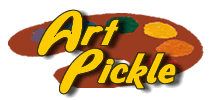“The symbolism in Neo Cave Painting”Andrea Benetti’s “Neo Cave Art” is not painted on rocks nor on rocky cave walls: it is painted on canvas. So don’t expect an artist with roughened, callused hands, armed with hammer and chisel, sweating and covered with chips and dust. At worst, you might catch him with a few spots of oil, or splashed with henné or paint.
So “Neo Cave Art” is a sort of fiction, the kind in which– to paraphrase Gorgia – those who let themselves be fooled are all the wiser.
Benetti’s painting invites us to take a trip backwards in time: a sort of regressus ad uterum to help us rediscover our relationship and harmonic balance with Nature, that which the false idols of progress-as-an-end-in-itself have altered and are forcing us to lose contact with.
The “cliff wall” where Benetti leaves his marks and colors, is actually a false cliff, that reminds us of our longing for stability and certainty, for the undying strength of the message it carries; the idea that before the transient stands the unchangeable and before the sacred stands the secular.
Cave painting was a magical act that took place inside a cavern; the artist-priest took part in the ritual perhaps alongside the tribal chiefs: the non-holy were left outside, “out front”, precisely.
The mark they made, a carved and painted groove was the ritual, called upon each time and in every vision to recreate a symbolic and spiritual universe. That is what any observer of Benetti’s painting must do: retreat into their own cave, penetrate the symbolism of the imagery in order to gain access to the archetype for which the glyph is but mere formal expression.
In constructing this intricate web of references and allusions (which no artist can reveal completely: mystery is by its own nature an inexplicable and intimate secret), Benetti means to restore to the images the strength of prayer. Not prayer to the gods; a layman’s prayer that embodies the purest sentiment of the heart with the same evocative force of the images.
So, even the “modern” forms, (cars, golf players, kites and sailboats), are treated the same as natural forms (flowers, fish, the universe or horses). All of them become tormented visions that come to life and thrive within the “natural” background of the junctures of the “rocks”.
Dario Scarfì
Siracusa Municipality – Department of Cultural Policy and UNESCO
Coordinator “Sicily” Pavilion - 54th Venice Biennale


